Berta "on Air

Shortly before winter arrives, the television visited us and looked over our shoulders while we were working with flax. The result is a really nice report. For all non-German speakers, we have created subtitles in English for you....

Shortly before winter arrives, the television visited us and looked over our shoulders while we were working with flax. The result is a really nice report. For all non-German speakers, we have created subtitles in English for you....
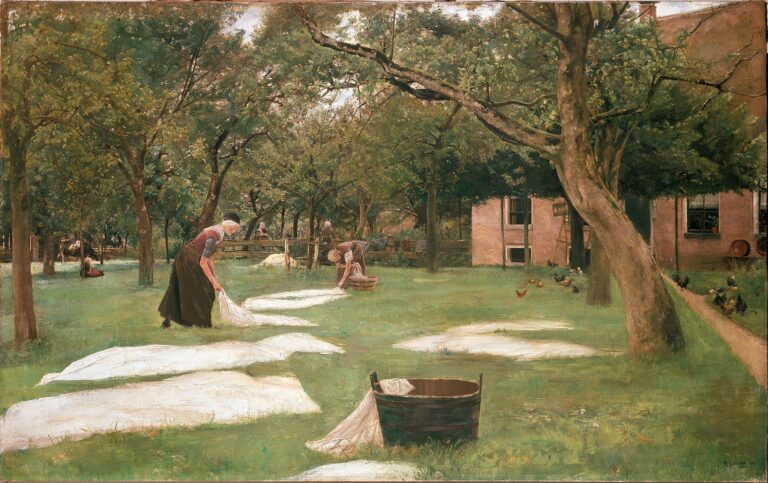
All bast fibres, but also some types of cotton, have a grey, brownish or beige colour. Home textiles in particular should be pure white in colour as a sign of cleanliness and good housekeeping. Freshly woven textiles, but also those that had become dirty through use, were therefore...
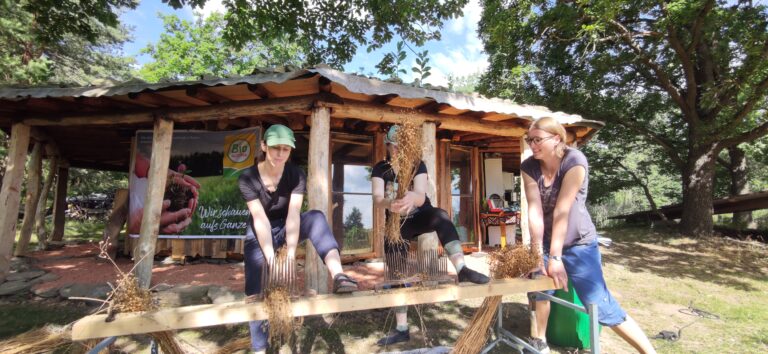
Yes, I live in a bubble. A bubble that is characterised by people who love textiles as much as I do. People who see the beauty in the fibres, the threads, the fabrics, the work of so many hands. At the last flax breaking day...
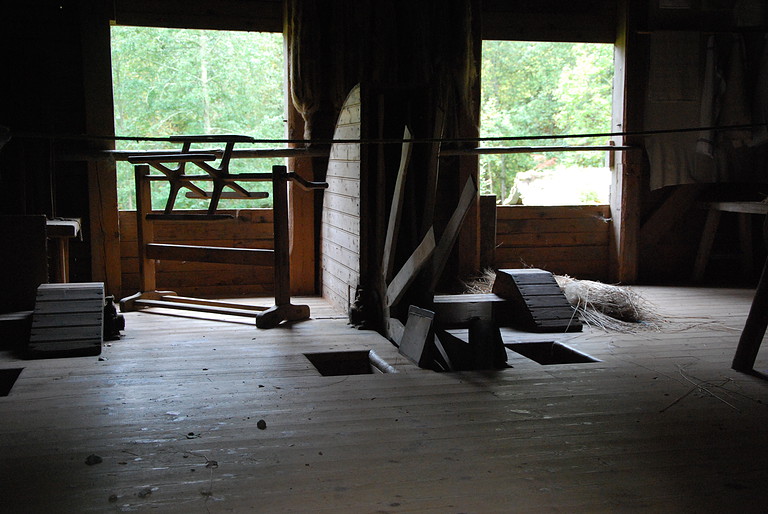
The flax mill in Trolldalen consisted of 10 different buildings: accommodation huts, flax sheds, a flax sauna (drying), several crushing hammers and oscillating wheels (all driven by water power). The facility was built by farmers from Rängsjö (approx. 8 kilometres away) who had no access to a stream.
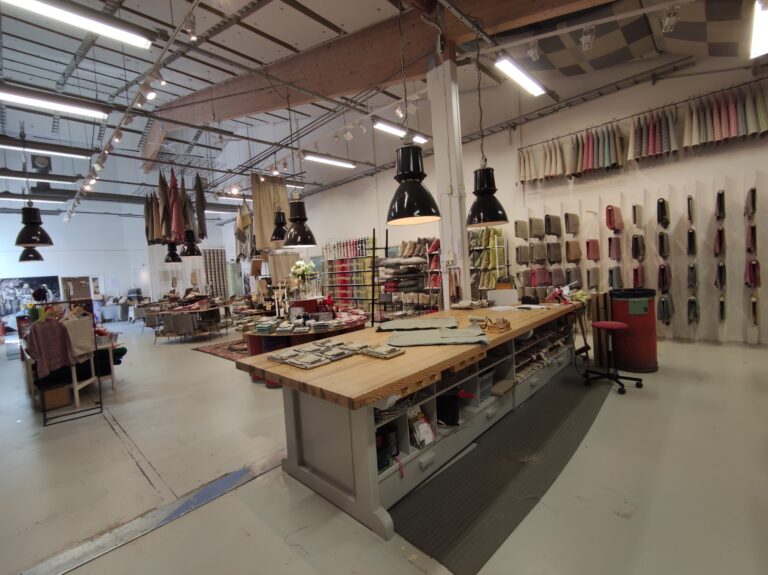
After the loud, lively city of Stockholm, the whole family was in the mood for some sea air. So we slowly made our way along the east coast towards Hälsingland and spent the night in Rullsanden, the "Swedish Riviera". It was already autumn here and swimming was just something...
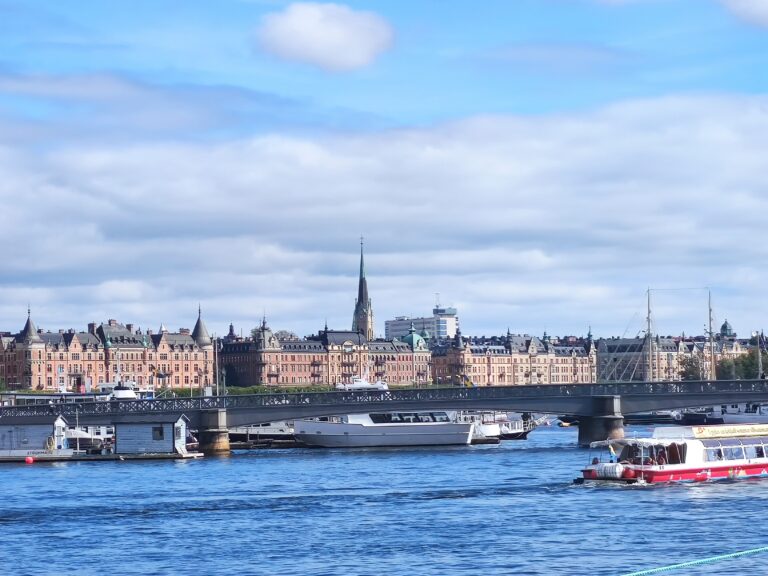
The days at Marie's were full of flax stories. That's why a family programme was on the itinerary last week. Otherwise my loved ones will probably never go "on tour" with me again. The destination for the three days of travelling was the Swedish capital Stockholm and...
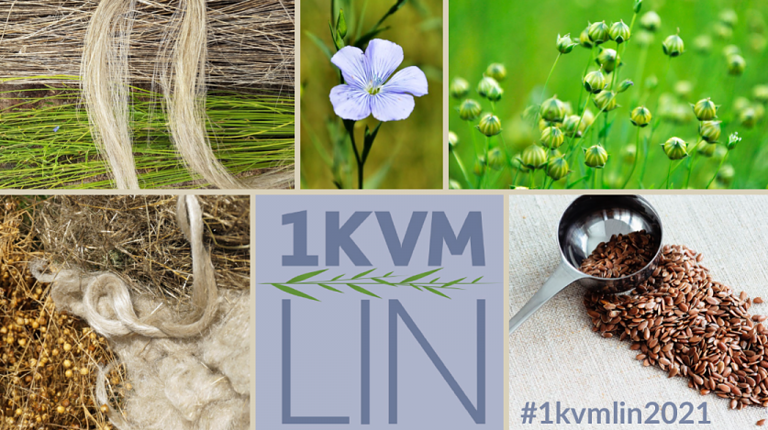
Flax seems to be booming in Sweden. One reason for this great interest is a project that now connects 6,000 people who all grow 1 m2 of flax in their gardens. There are videos on every step of the process, large regional groups that meet to exchange...
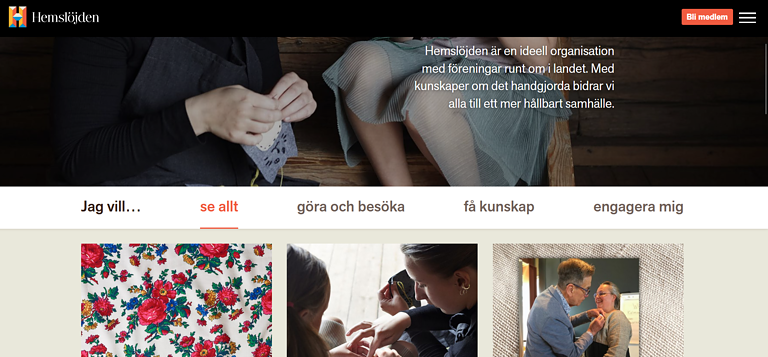
Sweden's way to strengthen (arts and) crafts I'm a little envious - in three days I gained an insight into the textile work of Marie Ekstedt Bjersing and Christin Wahlström Eriksson, visited a wonderful linen exhibition at Rydals, visited the Gunnebo...
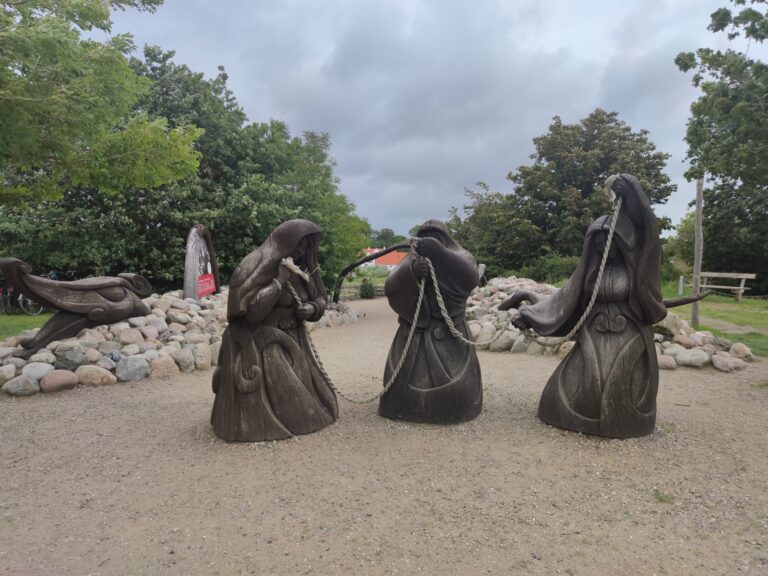
Ribe Viking Centre

The Netherlands also greeted us with rain, albeit more discreetly than the days before. The route took us 200 kilometres north from Burlo towards Friesland. For the first time, I realised (although I'm not very geographically aware) the distances we have to cover here in...
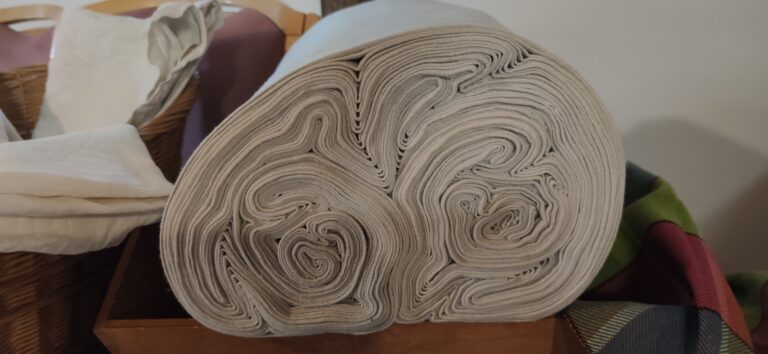
I also learnt a lot of completely new terms and some work steps in flax processing that were unfamiliar to me from Westphalia. "Boken" Boken refers to the softening of the flax stalks before crushing with the aim of protecting the fibres during the subsequent crushing process, because the...
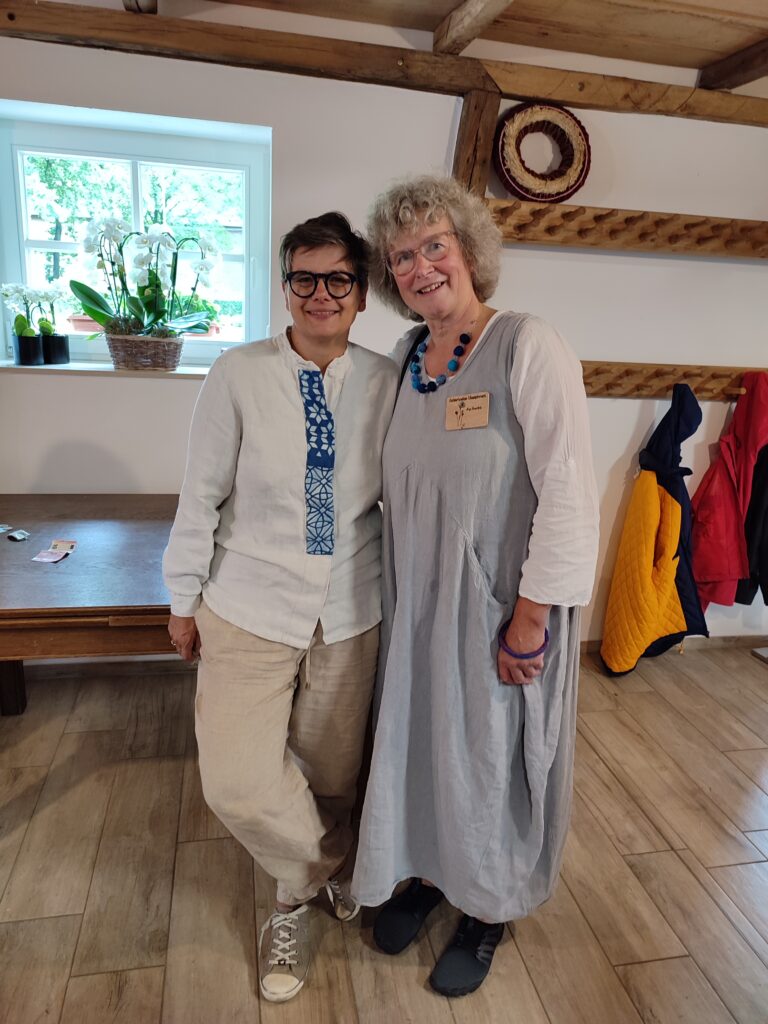
Flax accompanies and leads us through half of Northern Europe this August. Being on tour with Berta means meeting lots of wonderful fibre people, getting to know new linen and flax traditions, spending hundreds of kilometres on the road and braving the weather.
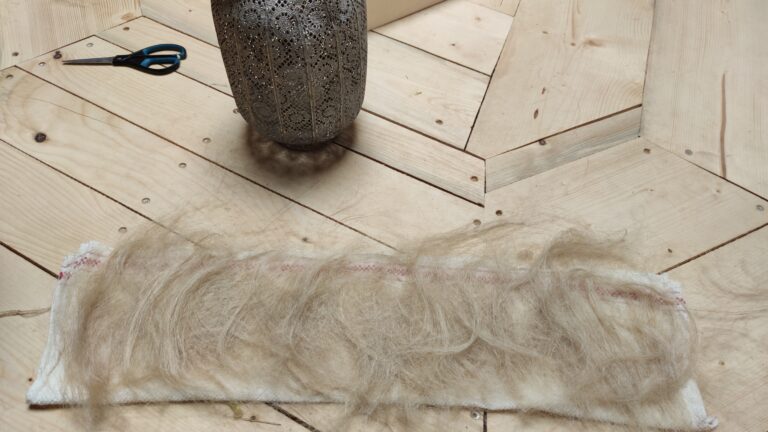
I like to spin fibres that are too short for the skirt but also too beautiful to be used as weaving yarn from a towel.
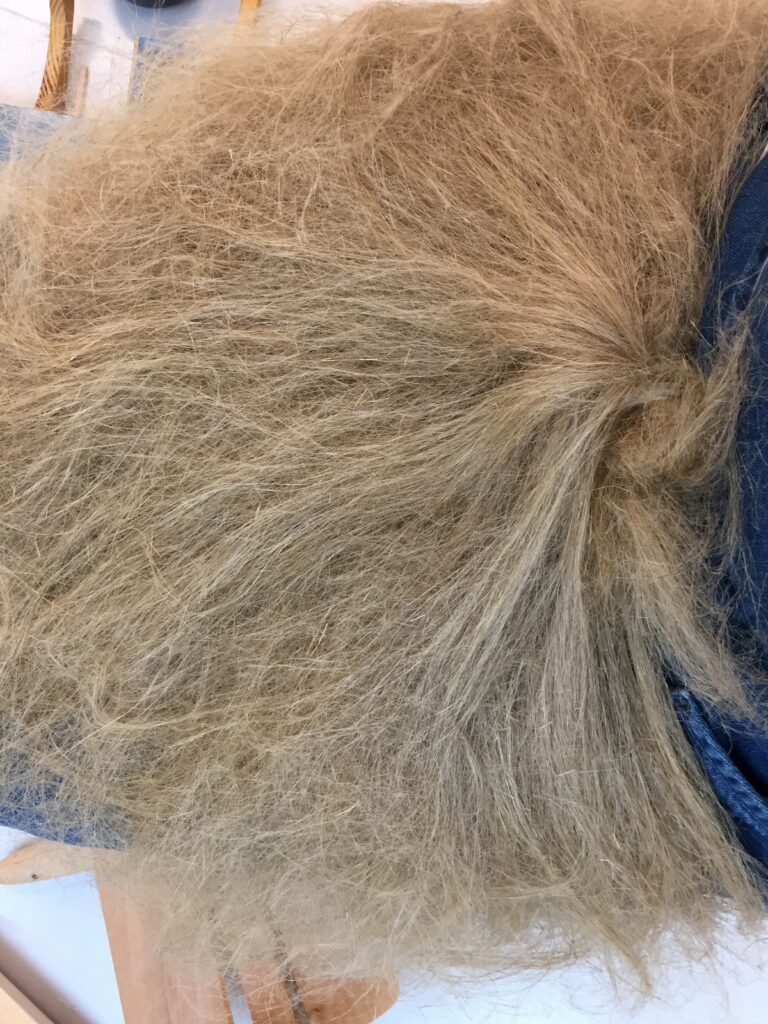
Writing just a short article about distaffs and the correct construction of such a skirt is presumptuous.
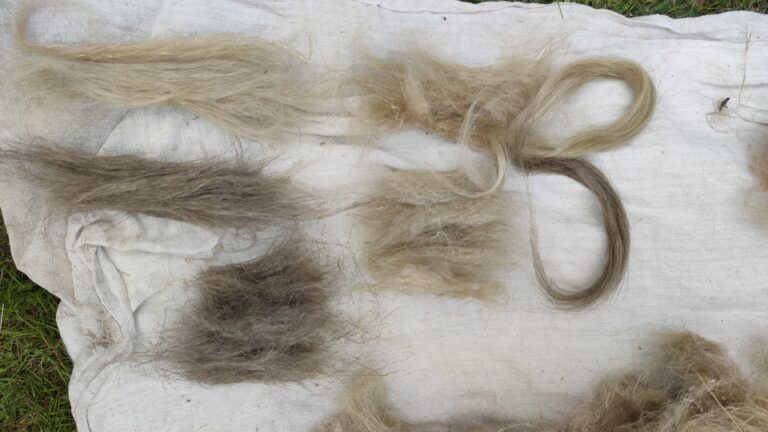
Tow refers to the shortest fibres of a flax plait, usually mixed with lots of shives and dust. There are traditionally many different ways of spinning the tow, but I find the roll type super practical because it doesn't require any special equipment and is familiar to most hand spinners from the wool.
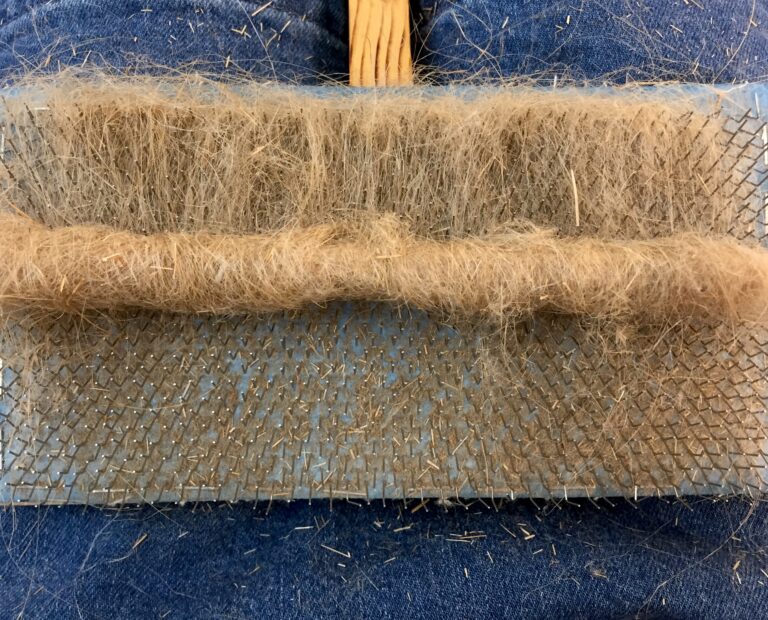
As soon as you mention the word "flax" in a spinning forum, a collective wince goes through the ranks.
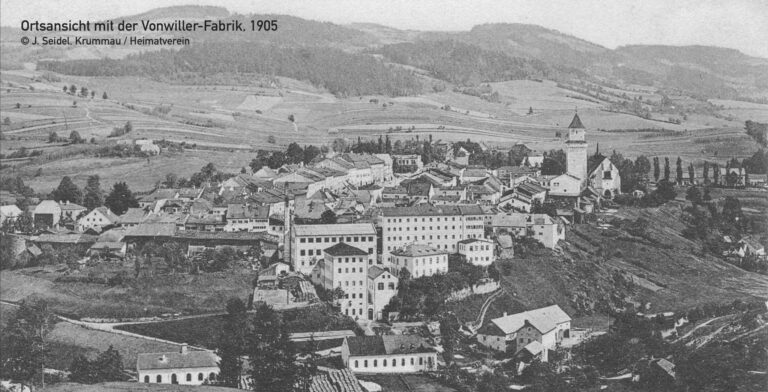
Flax and linen are part of the textile DNA of Northern Europe.
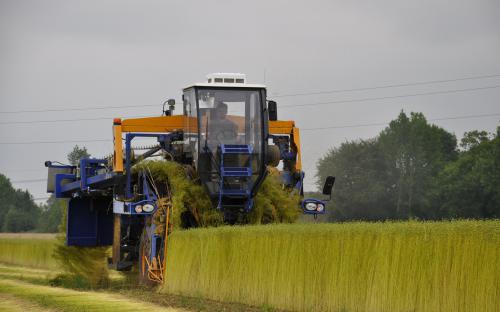
It is undisputed that flax accounts for less than 1 percent of global fibre production. Further, especially up-to-date figures are much harder to find. An attempt at a summary.
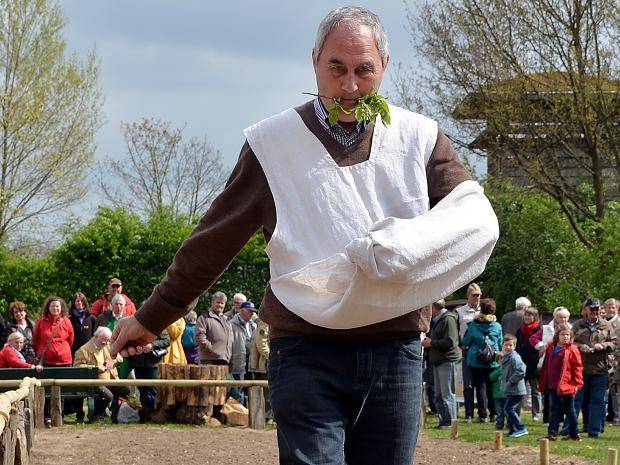
Ever since people settled down, farm labour has been associated with many rituals, customs, superstitions and a little magic. The aim was always to be rewarded with a good harvest for all the hard work.
You cannot copy content of this page